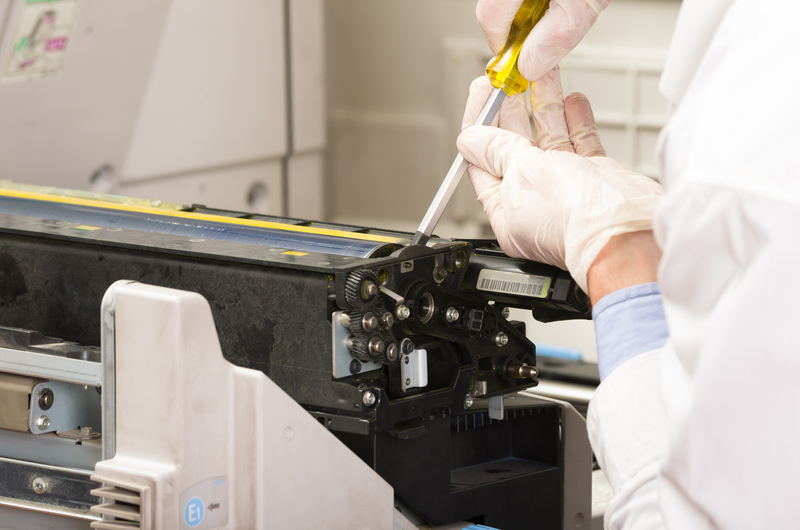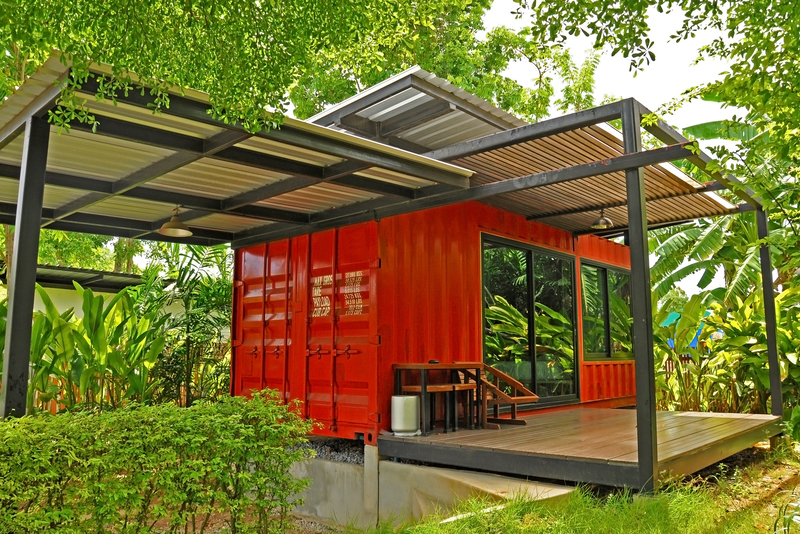Empowering Consumers in Responsible Packaging and Cardboard Disposal
Introduction: The Rise of Eco-Conscious Consumerism
In an era marked by unprecedented environmental awareness, responsible packaging and cardboard disposal have become central topics in the global conversation on sustainability. As e-commerce soars and online shopping becomes ubiquitous, consumers receive goods wrapped in layers of cardboard, plastic, and other packaging materials every day. This trend has put pressure not only on businesses to implement sustainable packaging solutions but also on consumers to embrace active roles in responsible packaging disposal.
This comprehensive article explores how empowering consumers can create meaningful change in the packaging landscape, detailing the importance of responsible packaging, best practices for cardboard disposal, innovative initiatives, and tangible tips for making a sustainable difference.

The Significance of Responsible Packaging and Cardboard Disposal
Packaging plays a pivotal role in product protection, branding, and logistics, but it is also a major contributor to landfill waste. Cardboard packaging, while generally recyclable, often ends up improperly disposed of or contaminated, diminishing its environmental benefits. Understanding the impact of packaging waste on ecosystems is critical for consumers seeking to champion environmental stewardship.
Environmental Impact of Packaging Waste
- Cardboard paperboard waste accounts for a substantial portion of municipal solid waste.
- Poor cardboard recycling can lead to deforestation, increased greenhouse gas emissions, and overburdened landfills.
- Improper disposal may cause contamination, reducing recycling efficiency and product quality.
- Even biodegradable packaging materials can release methane--a potent greenhouse gas--if decomposing in landfills instead of recycling centers.
By adopting responsible packaging habits and correct disposal strategies, individuals can dramatically reduce their environmental footprint.
The Role of Consumers in Sustainable Packaging Practices
Today's consumers are more informed and passionate about the origin, composition, and end-of-life of packaging materials. Empowering consumers in sustainable packaging involves enabling them with knowledge, tools, and actionable strategies to make better choices and facilitate circular economies.
Why Consumer Awareness Matters
- Informed consumers can influence manufacturers to adopt eco-friendlier packaging by demanding sustainable alternatives and supporting responsible brands.
- Consumer participation in proper recycling drives the effectiveness of municipal and commercial recycling programs.
- Public advocacy can lead to stricter packaging regulations and innovative solutions.
Enabling consumers to take active roles in responsible packaging is one of the most efficient ways to transition toward cleaner, greener communities.
Best Practices for Responsible Packaging and Cardboard Disposal
1. Understanding Packaging Labels and Symbols
Navigating the world of packaging labels can be challenging. Consumers should pay attention to symbols such as the Mobius loop (recyclable), FSC certification (responsibly sourced), and instructions indicating whether cardboard packaging must be separated or flattened.
2. Preparing Cardboard for Recycling
- Remove non-recyclables: Ensure that any plastic films, tapes, bubble wrap, or foam inserts are separated from cardboard boxes, as these can contaminate recycling streams.
- Flatten boxes: Cardboard should be fully flattened to save space in recycling bins and allow for efficient transportation.
- Keep it dry: Store cardboard in a dry area prior to recycling, as wet or greasy cardboard may not be accepted by recyclers.
- Check local guidelines: Different municipalities may have varying recycling protocols. Familiarize yourself with your community's rules to avoid missteps.
3. Upcycling and Reusing Cardboard Packaging
Even before recycling, repurposing cardboard packaging can extend its life and divert waste. Consider creative uses such as storage organizers, school projects, crafts, compost material, or even pet playhouses!
Empowering Consumers Through Education and Access
Consumer Education Initiatives
- Community Workshops: Municipalities and non-profits can host classes on responsible packaging disposal and upcycling ideas to engage residents and students.
- Digital Campaigns: Infographics, online tutorials, and gamified recycling challenges can make learning about proper cardboard disposal fun and accessible.
Accessibility to Recycling Infrastructure
- Convenient Collection Points: Drop-off locations for cardboard and other recyclables should be widespread and well-publicized.
- Bulk Pickup Services: Arranging for curbside or neighborhood pick-ups after major delivery days can encourage higher participation in responsible disposal.
When communities invest in education and infrastructure, they empower consumers to adopt responsible packaging habits that last.
The Business Perspective: How Brands Empower Their Customers
Companies have a pivotal role in fostering consumer participation in responsible packaging and cardboard recycling. The following strategies showcase how brands can empower their customers:
Transparent Communication
- Clear Recycling Instructions: Brands can print step-by-step recycling information directly onto packaging.
- Eco Narratives: Sharing the lifecycle story of packaging materials increases transparency and consumer trust.
Incentivizing Responsible Packaging Practices
- Take-Back Schemes: Retailers can offer rewards for returning used packaging for recycling or reuse.
- Loyalty Programs: Points or discounts for sustainable packaging choices or recycling participation motivate ongoing action.
- Reusable Packaging: Subscription models using reusable containers for deliveries foster repeated consumer engagement in eco-friendly habits.
Case Studies: Success Stories in Responsible Packaging and Cardboard Disposal
IKEA's Circular Packaging Approach
IKEA has invested heavily in recyclable and reusable cardboard packaging, reducing single-use plastics and educating its customers through vivid instructions on all products. Their take-back initiatives for cardboard and foam packaging have led to high recycling rates among shoppers.
Amazon's "Frustration-Free Packaging"
Amazon's frustration-free packaging initiative uses fewer materials and encourages customers to recycle. Their packaging comes with clear instructions, omits unnecessary plastics, and uses 100% recyclable cardboard, empowering millions of consumers to dispose of packaging responsibly.
Innovations Shaping the Future of Responsible Packaging
Biodegradable and Compostable Cardboard
Manufacturers are increasingly embracing compostable cardboard packaging made with water-based adhesives and natural inks. These options allow home composting, providing an easy disposal alternative for informed consumers.
Smart Packaging and Digital Scanning
New technologies allow consumers to scan QR codes on packaging to access real-time information on recycling centers, upcycling ideas, and correct disposal practices based on geographic location. These digitized solutions bring empowerment at your fingertips.
Practical Tips for Consumers in Responsible Packaging and Cardboard Disposal
- Prioritize minimal packaging: Choose products with less or responsibly sourced packaging when shopping.
- Reuse before recycling: Extend the life of boxes and packaging materials through creative upcycling projects.
- Do not contaminate recyclables: Keep food, grease, and plastics out of the cardboard recycling bin.
- Stay informed: Follow local recycling guidelines and any updates from municipal waste services.
- Support sustainable brands: Shop from businesses that share their recycling and responsible packaging commitments.
- Engage your community: Help neighbors, workplaces, and schools set up effective cardboard collection points.
- Compost when possible: If your cardboard is clean and marked as compostable, add it to your compost pile to return nutrients to the soil.
Common Myths About Packaging Disposal--Debunked
Myth: All Cardboard is the Same
Reality: Some types of cardboard--like pizza boxes soaked in grease--may not be recyclable. Always check your local regulations.
Myth: You Must Remove Every Bit of Tape
Reality: Most recycling processes can handle small amounts of tape or labels. Focus on removing large plastic components and flattening your boxes.
Myth: It's Ok to Recycle Wet Cardboard
Reality: Wet cardboard can cause issues in recycling machines and should be kept dry. Always store your recyclables in a dry place whenever possible.
Government and NGO Support for Responsible Packaging
Many governments and NGOs offer resources to help individuals become more responsible consumers. From downloadable guides and mobile apps to curbside pickup schedules, these organizations provide the backbone for consumer empowerment in responsible packaging and cardboard disposal.
Examples of Support Programs
- Recycling Education Campaigns: City and state authorities offer free resources to teach citizens about best practices in family-friendly formats.
- Household Recycling Kits: Non-profits may offer free bins, stickers, or pickup bags to encourage proper waste separation.
- Community Collection Drives: Schools and civic groups organize periodic cardboard collection events to boost participation and education.

The Road Ahead: Towards Zero-Waste Packaging Solutions
The journey towards eco-friendly packaging and zero-waste cardboard disposal is long, but consumer empowerment is a vital driver. As businesses continue to innovate and governments tighten regulations, empowered individuals can make a real difference, one box at a time.
A collective commitment to responsible packaging disposal not only reduces landfill use but also conserves resources, cuts pollution, and preserves natural landscapes for future generations.
Conclusion: Taking Action for a Cleaner Tomorrow
To sum up, empowering consumers in responsible packaging and cardboard disposal is essential for tackling today's environmental challenges. By staying informed, advocating for responsible business practices, and adopting sustainable disposal habits, every consumer becomes a crucial link in the chain of environmental guardianship.
Let's champion responsible packaging together--because every action, no matter how small, moves us closer to a greener, healthier planet.